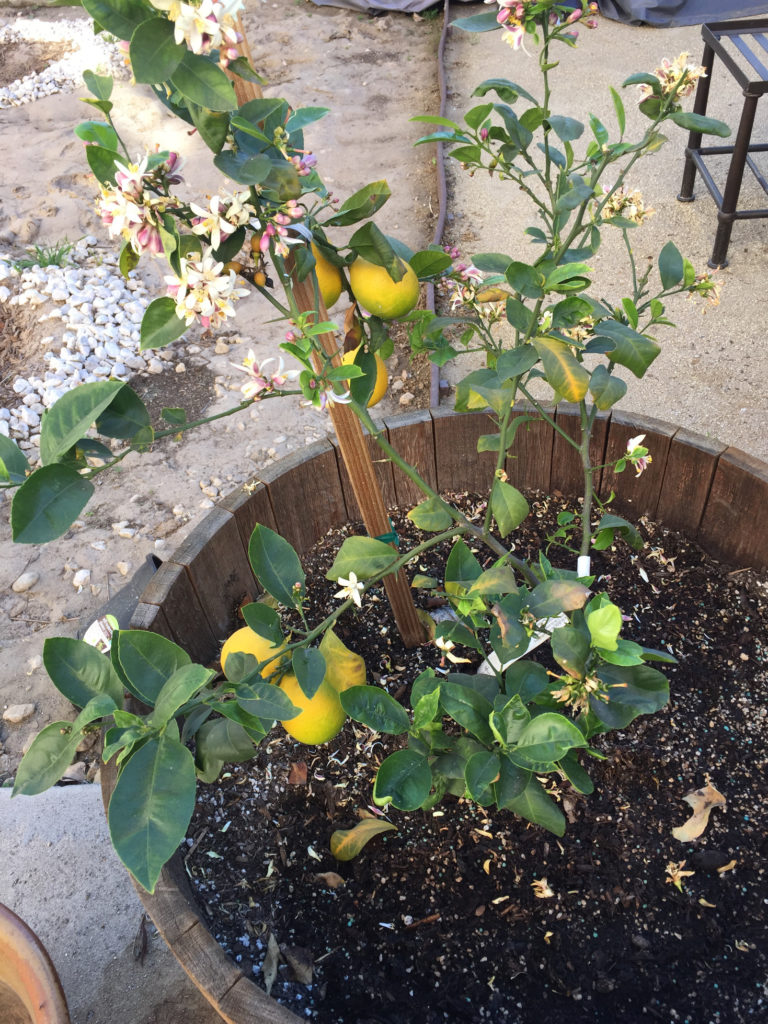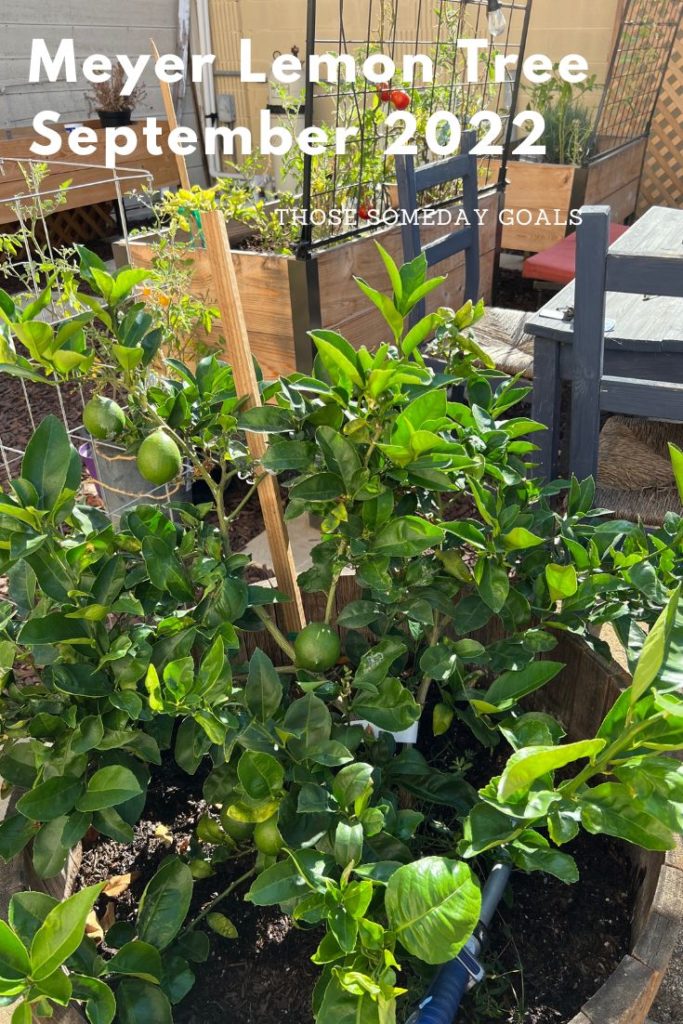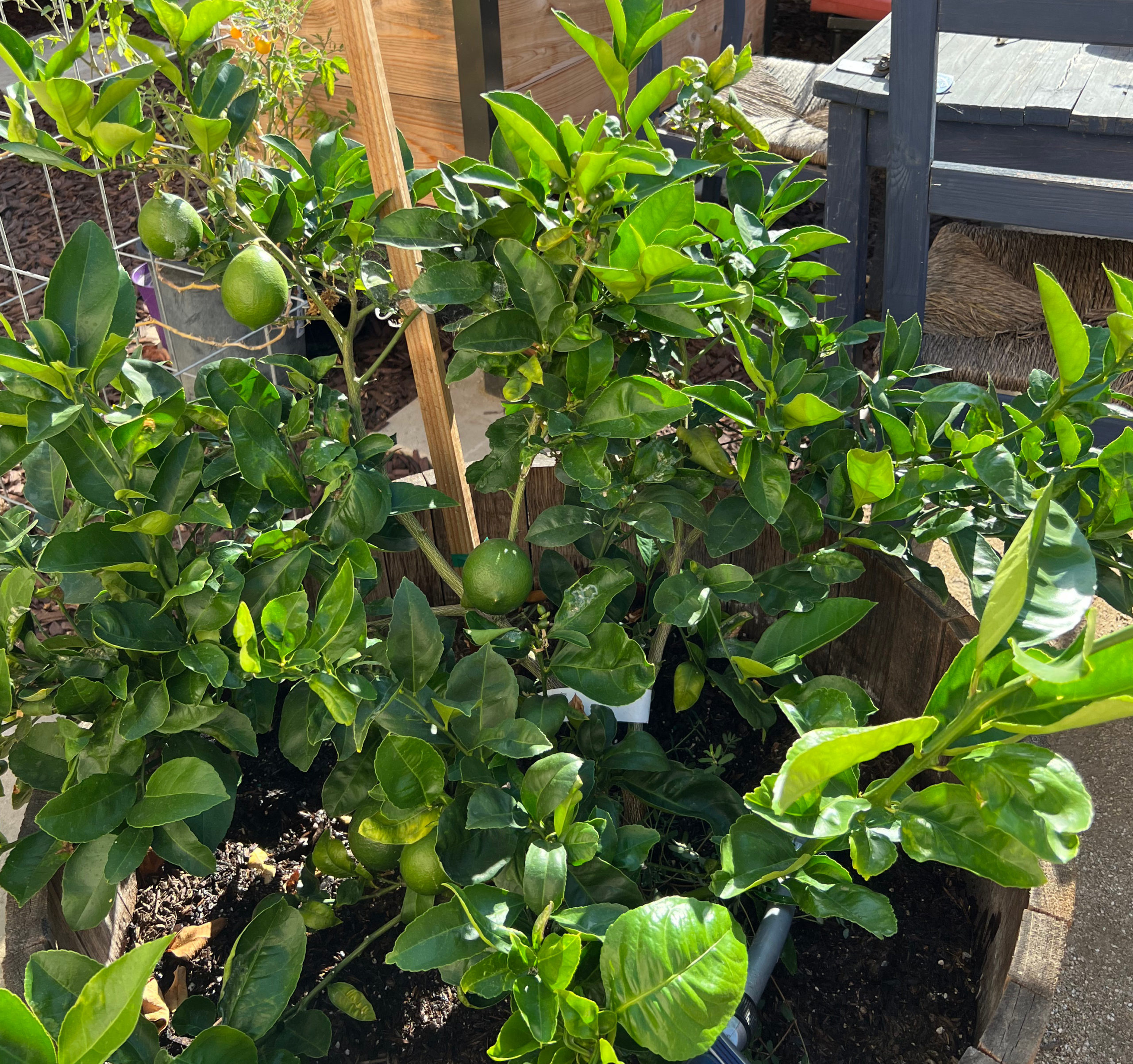I was so excited about growing Meyer Lemon Trees (Improved) in our container garden. We bought a tiny one from neighbors who ran a nursery in their backyard and took all the advice they could offer. I was skeptical that the Meyer would grow in a container, but I’m happy to report that I was wrong. We were amazed at how quickly the tree began to grow and produce. And now, I want to share what we did just in case you are also keen on growing Meyer Lemon Trees.
What Makes Meyer Lemon Trees (Improved) Different?
“Improved” Meyers are lemon trees that can bloom and fruit all year long. There is no one defined season, although when the tree is very young, you are likely to see slower growth and two-ish growing seasons. For example, in February, the tree was small but already producing fully ripened lemons. Now, in September, we are seeing many more green lemons forming, but we are about a month out from being able to pick them. If you see an “Improved” Meyer Lemon Tree growing, you’ll notice the white flowers that attract numerous helpful insects to your garden.

How Do Meyer Lemons Taste?
Meyer lemons are full of flavor and smell amazing! Because they are technically a cross between an orange and a lemon, the fruit from an Improved Meyer lemon tree is a little sweeter than an ordinary lemon. It’s a juicy fruit that is perfect for cooking. We love using it in not only tried and true recipes, like lemon bars, but we also make sure to freeze the juice and zest for later use when we get too much ripe fruit at once.
What is the Improved Meyer Lemon Tree Temperature Tolerance?
Improved Meyers are surprisingly hardy. They can easily survive down to 20 degrees Fahrenheit, although younger trees should be moved inside if your temperatures regularly dip below 35. As for the hotter temps, when the tree matures, it can handle sizzling temperatures in a heatwave. However, they prefer living in temps between 75-85 (don’t we all). If you have a young tree and a heatwave coming, consider giving it shade in the afternoon and extra water.
Tips for Growing Meyer Lemon Trees (Improved) in Zone 10
If you are starting with a healthy tree that has been grafted onto healthy, strong rootstock (which is the only way you can get a true Improved Meyer lemon tree), you are likely to produce more flowers and fruit than you would experience if you chose to grow a different kind of lemon tree from seed.
Don’t Immediately Transplant the Tree
For the first two years, you can actually keep your Meyer lemon tree in the large container it came with at the nursery. It helps to get the sapling a bit stronger. We had ours in the nursery container for about six-eight months, and only moved it had grown several inches and started to produce flowers. At that point, we moved it into our wine barrel, where we plan on keeping it.
Choose the Right Location
Believe it or not, when growing Meyer lemon trees, you don’t have to have the tree outside. I was shocked to learn that you could get fruit from a Meyer set inside your home. However, you do need abundant light and good airflow. So, if you are growing this tree inside and see the flowers popping up, consider having a gentle fan nearby to help with the airflow.
If you are growing your tree outside in a container, be sure that your plant is in a position to get at least six hours of daylight. I’m in Los Angeles, and the tree is now hardy enough to deal with even the hottest afternoon sun, but when it was smaller, we would shield it so that the blazing afternoon heat and sunlight didn’t burn the leaves or the fruit.
Water Every Other Day
We would water once every three days during the winter when the tree was still relatively small. Once the tree started to produce fruit, we stepped up the watering to every other day. This seemed to be a good rhythm. Now, we monitor the tree to see how it is doing in the hot weather. It may be September, but today will be 93, so we’ll keep an eye on it, particularly since it is currently developing fruit. The most important thing is to only let the soil dry out a little bit in between big waterings. (Note: In Los Angeles, we can only water two days a week, so we use our indoor clean, captured water to help keep the tree thriving in-between watering days).

Choose Citrus Fertilizer
We use a solid fertilizer developed specifically for citrus trees during the summer and whenever we see the lemons starting to grow to support the tree. We will stop adding fertilizer around November unless another crop of lemons has already begun to form.
Prune Your Improved Meyer Lemon Tree
I am terrible at pruning. I’m convinced I’m going to kill the plants and trees, so I want to just hope for the best. And technically, Meyers do not need to be pruned. BUT if you are going to prune, I highly recommend following the advice of Charles Malki in his video. Prune branches that point downwards or are heavily shaded so that you can direct the tree’s energy toward more “fruitful” branches. Also, if you prune from the top, you’ll see that the tree because bushier and is likely to grow outward – terrific for growing Meyer lemon trees in containers. If you prune from below, as is the case with Malki’s video, you’ll see that the tree will grow taller.
One more thing on pruning – you may see clusters of fruit developing. You’ll get three or four tiny green lemons start to form. If you leave them in the cluster, none of them will likely grow to maturity. Gently prune out the additional fruit buds, leaving you with only one or two small fruits. I have only had one situation where three have continued to grow in a cluster, and that is right now. And while it is exciting to see them survive, I know that by not pruning them early, each one of the lemons will be quite small when they ripen. Lessons learned!
Click here for more information on growing fruit and vegetables in container gardens.
